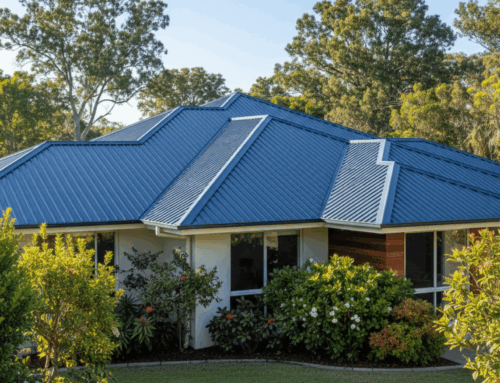Asbestos was once considered a miracle material in the construction industry. It was durable, fire-resistant, and offered excellent insulation. But as we now know, those benefits came at a steep cost to health and safety. For homeowners and property managers dealing with aging asbestos roofs, the big question is: Should you restore it or remove it entirely? In this guide, we’ll break down the pros and cons of each approach, helping you make the safest and most cost-effective long-term decision.
What Is Asbestos and Why Was It Used in Roofing?
Asbestos is a naturally occurring mineral that was widely used in construction materials during the 20th century, particularly between the 1940s and 1980s. In roofing, asbestos was often mixed with cement to create highly durable and weather-resistant sheets. These materials were prized for their strength and longevity, often lasting decades with minimal maintenance.
Unfortunately, it wasn’t until later that the severe health risks of asbestos exposure became clear. By then, millions of buildings had been constructed with it—including thousands of residential homes.
The Health Risks of Asbestos: What Every Homeowner Should Know
Asbestos fibers are incredibly small—so small that they can remain airborne for hours once disturbed. When inhaled, they can lodge in the lungs and remain there for years, potentially leading to life-threatening diseases such as mesothelioma, asbestosis, and lung cancer.
Even asbestos roofs that appear intact can deteriorate over time due to weathering or impact damage. Micro-cracks and wear can release fibers into the air without any visible warning. That’s why any work involving asbestos materials must be approached with caution and carried out by professionals trained in asbestos safety.
Restoration vs Removal: What’s the Core Difference?
Restoration involves encapsulating or sealing the existing asbestos roof to prevent the release of harmful fibers. It might also include reinforcing structural elements, applying protective coatings, or installing new materials over the old ones.
Removal, on the other hand, involves the complete elimination of asbestos-containing materials from the property. This is typically more labor-intensive, costly, and requires strict compliance with legal disposal protocols.
Each approach comes with its own set of considerations—cost, safety, longevity, and regulations—all of which should factor into your decision.
When Is Restoration a Viable (and Safe) Option?
Restoration may be the right path if the asbestos roof is in reasonably good condition with minimal signs of wear or damage. Sealing the roof with a high-quality encapsulant can prevent fiber release and extend the roof’s life by many years. This option is typically faster and more affordable than full removal, and it avoids disturbing the asbestos, which reduces immediate risk.
However, restoration should always be based on a thorough inspection by a certified professional. ICON Asbestos Roof Replacement frequently advises clients on whether restoration is a safe interim solution or if removal is ultimately necessary.
Why Full Removal Isn’t Always the Best First Move
Many people assume that removing asbestos is always the safest choice, but that’s not necessarily true. Removal, especially if done improperly, can significantly increase exposure risk during the process. It’s also the more expensive option and often comes with longer project timelines due to permits and disposal requirements.
In some cases, restoring and maintaining the roof until a more suitable removal window arises (financially or logistically) may be the safer and more pragmatic decision. Removal should be considered when the material is significantly damaged, friable (easily crumbled), or when future renovations will inevitably disturb the asbestos.
The Long-Term Costs: Financial, Health, and Environmental
When comparing costs, restoration often wins in the short term. However, if your asbestos roof is near the end of its life or has recurring issues, removal could be more cost-effective in the long run.
From a health perspective, removal eliminates the risk altogether—but only if done safely. Improper removal can result in severe contamination. Environmentally, both options have implications. Restoration minimizes waste, while removal must ensure responsible disposal of hazardous material.
We at ICON Asbestos Roof Replacement help clients evaluate these factors thoroughly, looking beyond upfront costs to assess the full spectrum of risks and rewards.
Legal and Insurance Implications: What You Might Overlook
Both restoration and removal are subject to regulations. In Australia, for instance, handling asbestos requires licensed professionals and must comply with Work Health and Safety (WHS) laws. Failing to follow the correct procedures can lead to significant fines and even legal action.
Insurance is another often-overlooked aspect. Some policies exclude asbestos-related damage or may not cover DIY work involving hazardous materials. Consulting with your provider is essential before starting any asbestos-related project.
Real Case Studies: Lessons from Homes That Chose Differently
In one recent project, a homeowner with a relatively intact asbestos roof opted for restoration, avoiding unnecessary disruption and saving thousands in immediate costs. After encapsulation and reinforcement, their roof has remained in excellent condition three years on.
Conversely, another client faced frequent roof leaks and fiber shedding. For them, ICON Asbestos Roof Replacement recommended complete removal, which, although costlier upfront, prevented further health risks and allowed for the installation of a modern, energy-efficient roof that increased the home’s value.
The Role of Professional Assessment: Don’t Make the Call Alone
No two roofs are exactly alike, and neither are their risk profiles. That’s why the first and most important step is a detailed professional assessment. Trained asbestos experts use air monitoring, material sampling, and structural evaluations to determine the best course of action. What looks safe to the untrained eye could be a ticking time bomb.
ICON Asbestos Roof Replacement provides in-depth inspections and transparent recommendations, ensuring homeowners have all the information they need to decide wisely.
Making the Safer Choice: A Decision Checklist for Homeowners
If you’re trying to decide between asbestos roof restoration or removal, consider the following:
- Is the roof showing signs of wear, damage, or leaks?
- Do you plan on doing renovations that might disturb the asbestos?
- What is the condition of the asbestos material—friable or intact?
- What’s your budget now versus your long-term plans?
- Have you consulted a licensed asbestos professional for an assessment?
Ultimately, there is no one-size-fits-all answer. Restoration may buy you time and safety, while removal offers permanent peace of mind. The right choice depends on the condition of your roof, your financial capacity, and your long-term goals.
If you’re facing this decision, reach out to trusted experts. ICON Asbestos Roof Replacement is here to guide you through every step—whether you’re leaning toward restoring what’s already there or preparing for a full upgrade.
Let us help you make the safest long-term choice for your home and your health.




